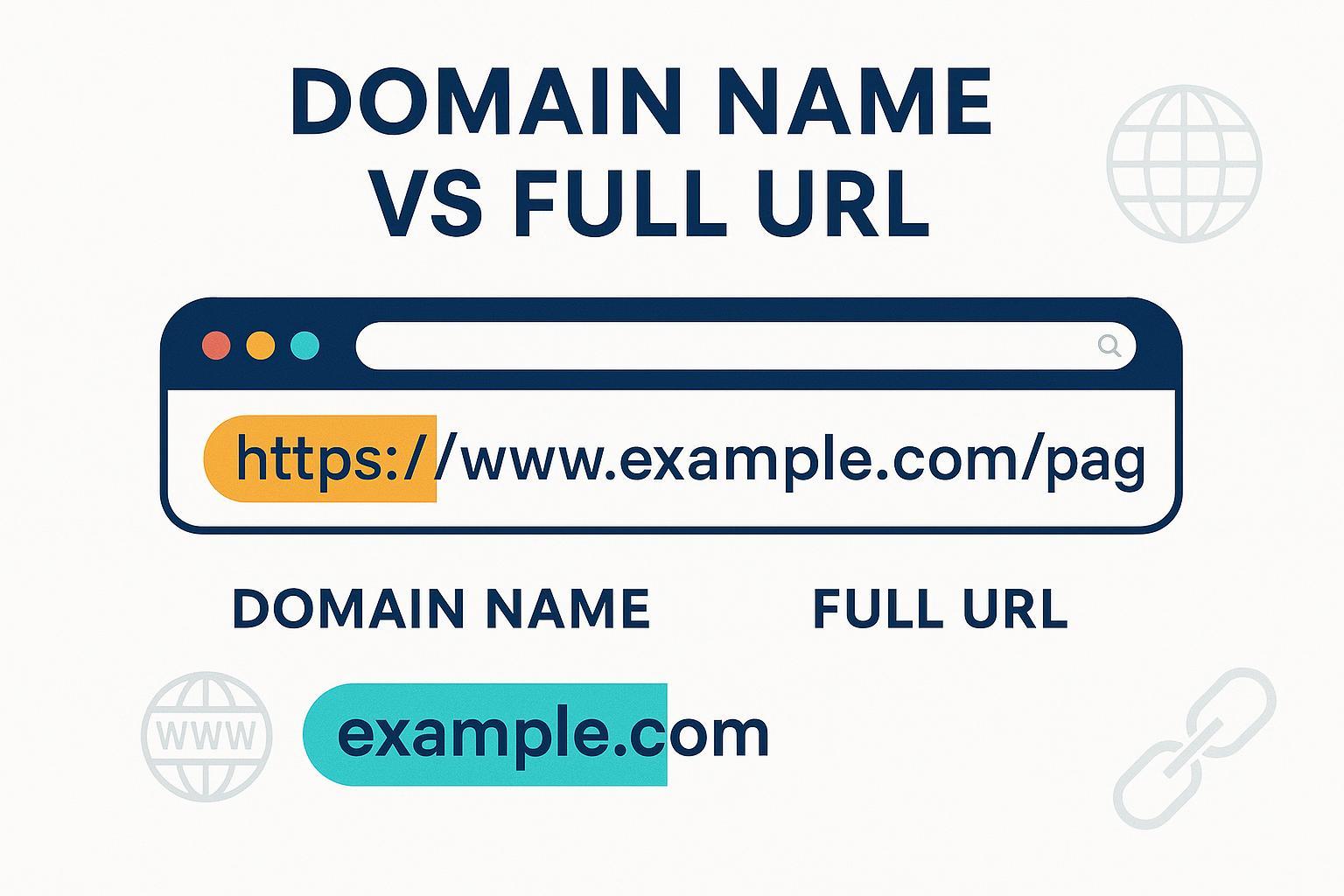Understanding the Relationship Between URLs and Domain Names

Quick Definitions
- Domain Name: The main, human-readable address for a website that points to its server—like “www.example.com” (source).
- URL (Uniform Resource Locator): The full address that locates a specific resource on the internet, including protocol, domain, and additional path or parameters—like “https://www.example.com/blog/article” (W3C URL Standard).
In-Depth Explanation
A domain name is a vital part of the web’s address system, chosen for brand identity, memorability, and ease of access. It replaces complex IP numbers with simple text that leads users to your website’s homepage or root.
A URL builds upon the domain name by specifying the exact location of any resource (webpage, image, document) on the site. The URL includes several parts: the protocol (e.g., HTTP/HTTPS), optional subdomain (e.g., “blog.”), the domain name, top-level domain (TLD, like .com), path (the folder/page), parameters, and anchor (#fragment). For example:
https://blog.example.com/news/launch?ref=summer#section2
Here, “example.com” is the domain name, while the rest (protocol, subdomain, path, query, anchor) collectively form the URL.
Key Components Breakdown
- Protocol: Tells the browser how to connect (e.g., HTTP, HTTPS)
- Subdomain: Optional prefix to the domain (e.g., www, blog)
- Domain Name: Main website address (e.g., example)
- TLD (Top-Level Domain): Suffix denoting type/area (e.g., .com, .org)
- Path: Directs to a specific page or resource (e.g., /blog/article)
- Query Parameters: Pass data within the URL (?item=1)
- Anchor/Fragment: Points to a section within the page (#section2)
Real-World Applications in Marketing & SEO
- Branding: A concise, memorable domain (like "nike.com") enhances trust and global reach. Complex, keyword-stuffed domains can look spammy (read more).
- SEO Impact: Human-readable, structured URLs (e.g., www.brand.com/blog/insights) perform better in search and encourage sharing. Using clear subfolders instead of subdomains can consolidate SEO signals.
- Campaign Tracking: Marketers use unique URLs (with UTM parameters) to track performance of campaigns, requiring both solid domain strategy and URL structure.
Scenario Example: A florist deciding between “austinsbestflowers-tx.com/special-events-tx” versus “bloomboutique.com/events” will find the latter offers better branding, relocation flexibility, and SEO benefits.
Comparison Table: Domain Name vs. URL
| Feature | Domain Name | URL |
|---|---|---|
| Purpose | Points to homepage/root | Points to any resource on the web |
| Example | example.com | https://example.com/blog/article |
| Includes Path? | No | Yes |
| Includes Protocol? | No | Yes |
| Use in SEO | Strong for brand, memorizability | Crucial for structure, user experience |
Related Concepts
- Protocol (HTTP/HTTPS): Communication rules for accessing resources.
- Subdomain: A subdivision within your main domain (like “store.example.com”).
- TLD (Top-Level Domain): The last part of a domain (.com, .org).
- Path/Permalink: Shows the file/page on your website.
- DNS (Domain Name System): Translates domain names into IP addresses for browsers.
- IP Address: Numeric address of your website’s server; domains are mapped to it.
- Web Hosting: Physical service managing site files under your domain name.
In summary: The domain name is your site’s core identity, while the URL is the unique address leading to anything on your site. Both are foundational for online marketing, SEO, and a seamless user journey.

